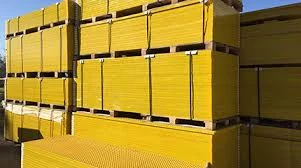
-
 Afrikaans
Afrikaans -
 Albanian
Albanian -
 Amharic
Amharic -
 Arabic
Arabic -
 Armenian
Armenian -
 Azerbaijani
Azerbaijani -
 Basque
Basque -
 Belarusian
Belarusian -
 Bengali
Bengali -
 Bosnian
Bosnian -
 Bulgarian
Bulgarian -
 Catalan
Catalan -
 Cebuano
Cebuano -
 China
China -
 China (Taiwan)
China (Taiwan) -
 Corsican
Corsican -
 Croatian
Croatian -
 Czech
Czech -
 Danish
Danish -
 Dutch
Dutch -
 English
English -
 Esperanto
Esperanto -
 Estonian
Estonian -
 Finnish
Finnish -
 French
French -
 Frisian
Frisian -
 Galician
Galician -
 Georgian
Georgian -
 German
German -
 Greek
Greek -
 Gujarati
Gujarati -
 Haitian Creole
Haitian Creole -
 hausa
hausa -
 hawaiian
hawaiian -
 Hebrew
Hebrew -
 Hindi
Hindi -
 Miao
Miao -
 Hungarian
Hungarian -
 Icelandic
Icelandic -
 igbo
igbo -
 Indonesian
Indonesian -
 irish
irish -
 Italian
Italian -
 Japanese
Japanese -
 Javanese
Javanese -
 Kannada
Kannada -
 kazakh
kazakh -
 Khmer
Khmer -
 Rwandese
Rwandese -
 Korean
Korean -
 Kurdish
Kurdish -
 Kyrgyz
Kyrgyz -
 Lao
Lao -
 Latin
Latin -
 Latvian
Latvian -
 Lithuanian
Lithuanian -
 Luxembourgish
Luxembourgish -
 Macedonian
Macedonian -
 Malgashi
Malgashi -
 Malay
Malay -
 Malayalam
Malayalam -
 Maltese
Maltese -
 Maori
Maori -
 Marathi
Marathi -
 Mongolian
Mongolian -
 Myanmar
Myanmar -
 Nepali
Nepali -
 Norwegian
Norwegian -
 Norwegian
Norwegian -
 Occitan
Occitan -
 Pashto
Pashto -
 Persian
Persian -
 Polish
Polish -
 Portuguese
Portuguese -
 Punjabi
Punjabi -
 Romanian
Romanian -
 Russian
Russian -
 Samoan
Samoan -
 Scottish Gaelic
Scottish Gaelic -
 Serbian
Serbian -
 Sesotho
Sesotho -
 Shona
Shona -
 Sindhi
Sindhi -
 Sinhala
Sinhala -
 Slovak
Slovak -
 Slovenian
Slovenian -
 Somali
Somali -
 Spanish
Spanish -
 Sundanese
Sundanese -
 Swahili
Swahili -
 Swedish
Swedish -
 Tagalog
Tagalog -
 Tajik
Tajik -
 Tamil
Tamil -
 Tatar
Tatar -
 Telugu
Telugu -
 Thai
Thai -
 Turkish
Turkish -
 Turkmen
Turkmen -
 Ukrainian
Ukrainian -
 Urdu
Urdu -
 Uighur
Uighur -
 Uzbek
Uzbek -
 Vietnamese
Vietnamese -
 Welsh
Welsh -
 Bantu
Bantu -
 Yiddish
Yiddish -
 Yoruba
Yoruba -
 Zulu
Zulu
The Role of FRP Launders in Contemporary Water Treatment Systems
The Importance of FRP Launder in Modern Water Treatment
In the quest for efficient and sustainable water treatment solutions, the role of Fiber Reinforced Plastic (FRP) launders has become increasingly significant. As modern water treatment facilities face rising demands for higher efficiency and durability, the adoption of FRP materials has proven to be a game changer, particularly in applications such as water distribution, filtration, and wastewater management.
One of the primary advantages of FRP launders is their exceptional resistance to corrosion. Unlike traditional materials like steel or concrete, FRP does not succumb to the corrosive effects of harsh chemicals commonly used in water treatment processes. This property significantly extends the lifespan of the equipment, reducing maintenance costs and ensuring consistent performance over time. In an industry where downtime can lead to significant operational challenges and financial losses, the durability of FRP launders provides a critical advantage.
Moreover, the lightweight nature of FRP makes it easier to handle and install, which is a crucial factor in modern water treatment facilities. The reduced weight can lead to lower transportation costs and simpler installation procedures, thereby decreasing overall project timelines and labor expenses. As facilities continue to modernize their infrastructure, the integration of lightweight materials such as FRP becomes increasingly attractive.
the importance of frp launder in modern water treatment

The design flexibility offered by FRP also enhances its application in water treatment. It can be molded into various shapes and sizes, allowing for customized solutions that can meet the unique requirements of different facilities. This adaptability is essential as water treatment processes evolve and require innovative solutions to manage varying water quality and quantity challenges effectively.
Another significant advantage of FRP launders is their impact on water quality. The smooth surface of FRP minimizes the potential for biofilm formation, which can be a common issue in traditional materials. By reducing this risk, FRP launders contribute to improved water quality, helping treatment plants meet stringent health and safety standards.
Furthermore, FRP materials are often regarded as environmentally friendly options. Many FRP products are manufactured using recyclable materials and can themselves be recycled at the end of their service life. This sustainability aspect aligns well with the growing emphasis on eco-friendly practices in water treatment, making FRP launders not only a practical choice but also a responsible one.
In conclusion, the importance of FRP launders in modern water treatment facilities cannot be overstated. Their corrosion resistance, lightweight characteristics, design flexibility, positive impact on water quality, and sustainability make them indispensable components of contemporary water treatment systems. As the sector continues to evolve, the role of FRP materials will likely expand, further enhancing the efficiency and effectiveness of water management practices worldwide.









